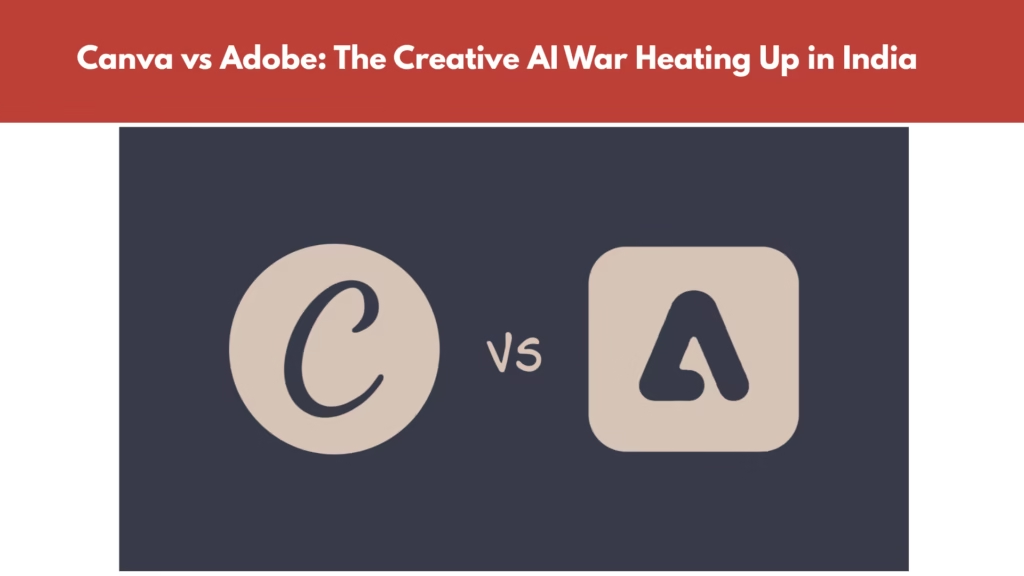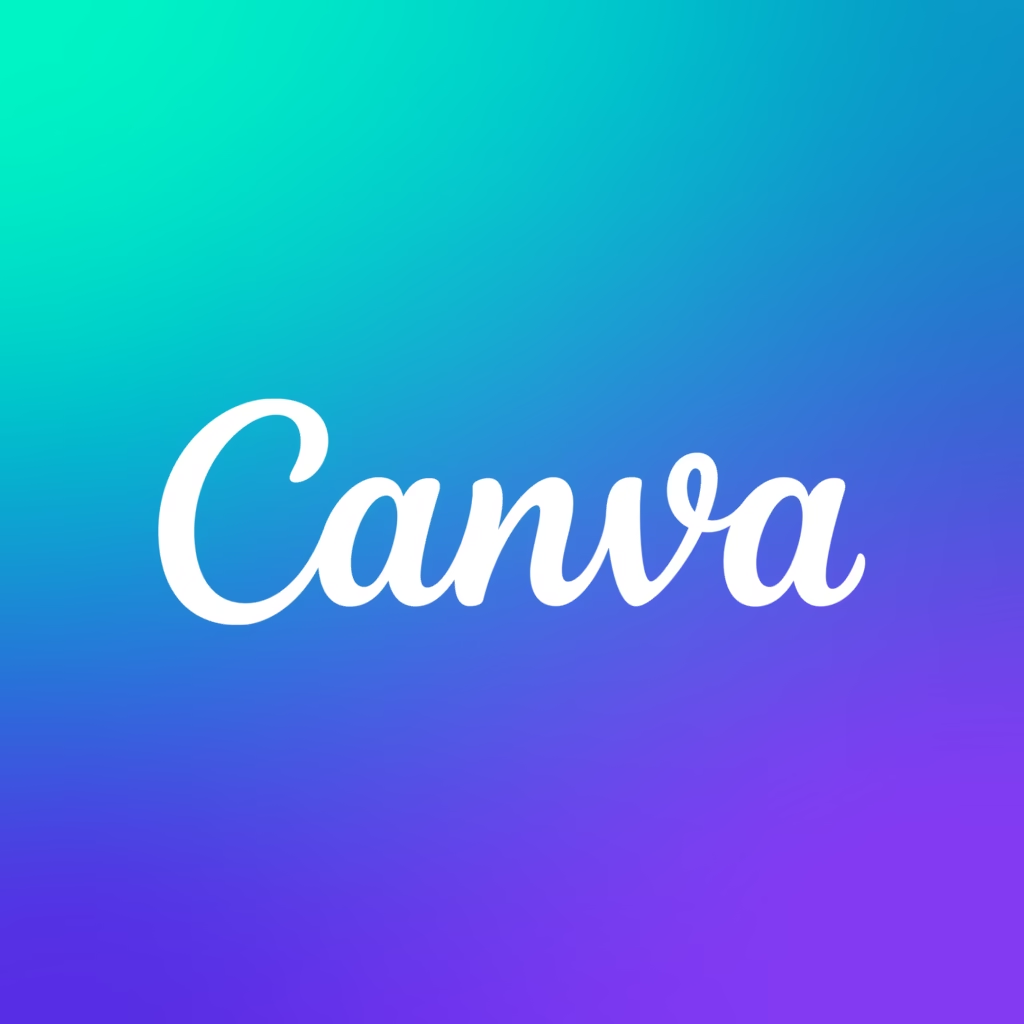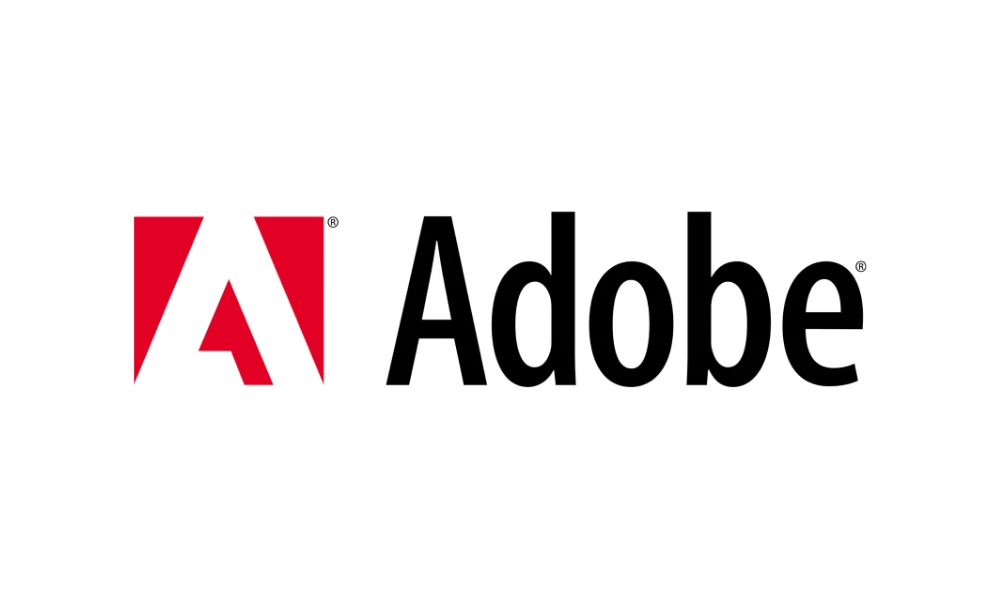Canva vs Adobe: Who Will Influence India’s Creative AI Future?

Canva
Canva vs Adobe: Users feel that Canva has a minor advantage over Adobe Firefly due to its more open-source tools and straightforward UI, even though Adobe Firefly produces high-quality images.
A prompt and a click allow you to complete tasks that once required hours of work and a team of designers. Because AI image production technologies simplify workflows, open up new possibilities, and fundamentally alter our perspective on visual creativity, they are quietly becoming indispensable for professionals.
One such AI tool for creating images that is integrated with the Creative Cloud system is Adobe Firefly. The company claims that through its Content Authenticity Initiative, Adobe encourages the creation of ethical content and makes it possible to generate graphics utilizing tools like Generative Fill.
Canva vs Adobe:
By integrating with Photoshop and Illustrator, Adobe’s generative tool makes it possible to create high-quality graphics. In addition to providing easy access to Adobe assets, such music and sound libraries, which are utilized in a variety of apps, it also connects with Adobe’s AI capabilities. As a commercially safe technology with no “copyright and IP violations,” Adobe stands out in the market thanks to its ethical AI badge, according to Prativa Mohapatra, vice president and managing director of Adobe India.
“Firefly has been trained on the images and content which belongs to Adobe, either [through] direct copyrights on it or [content] which is free,” Mohapatra continued, adding that many AI models are just as excellent as the prompts used for image development.

Along with a number of new Firefly features and improvements to the Creative Cloud app, Adobe released two iterations of their text-to-image generative AI model yesterday. Additionally, the fourth-generation Firefly model gives its users two options: one that is optimized for efficiency and speed, and another for those who need to do more work.
The limitations of using generative AI tools to create images : Canva vs Adobe:
You must also take into account the model’s constraints in order to create a superb one. Reports state that Firefly does not have native vector creation, which is mainly used for still photos. The program is more costly than other open-source or less expensive options that professionals use, even though it processes high-quality photographs.
Mohapatra contends that Adobe takes into account its limitations, particularly the absence of templates, even as it acknowledges the “ease of use” tools. But “it’s about timing,” she noted, adding that Adobe Express products are being improved daily.
Because “you can take an image from your photo library [to] start with something,” Mohapatra emphasized, Adobe also contends that the Firefly tool gives non-creatives a place to start.
Similarly, Canva’s AI tool may produce generic photos since it creates images based on how well-considered your prompts are. Additionally, it does not offer image-to-video cues; nevertheless, Firefly is not the only one of Adobe’s AI technologies. “We began with augmented vectors and pictures. The video has already been released. Therefore, it seems like a natural development to me,” Mohapatra added.
However, professionals that are well-versed in Adobe’s functionality and transparent about its outcomes are known to use the program. Regarding Canva, it offers a more flexible and affordable tool and is highly beginner-friendly. While some of Canva’s AI features are also open source, there are restrictions on how they may be used.
Is Canva the Best Option?
Long before the recent explosion of AI design tools and businesses, Canva had been considering investments in AI for more than seven years.
In a previous interview, Cameron Adams, co-founder of Canva, told AIM, “AI is now integrated at every touch point that you have within Canva, from the home page where you might be suggested different designs…through to every step in designing, whether that’s removing a background or getting suggestions on copy.”
Although Canva is well-known for its drag-and-drop design and template features, the platform now allows users to generate images using prompts that are powered by the DALL-E and Stable Diffusion models. Canva’s Magic Media tool creates graphics using AI models from third parties. Canva is also well-known for its plugin marketplace, easy-to-use UI, and basic video editing.
Canva offers a variety of AI tools that are driven by OpenAI’s algorithms, such as GPT-like models for text production and DALL-E for image generation. These algorithms have been employed by Canva to incorporate a text copy generator, text-to-image capabilities, and Magic Design, a GenAI-powered design tool.

Market in India :
Canva has seen significant success as a result of its extensive usage throughout India as the nation’s preferred image creation and editing application. India is now Canva’s fourth-largest market, according to AIM, and Adams views the country as a force that has revolutionized digital design on a bigger scale.
Additionally, Canva has established a website in Hindi, allowing millions of people to interact with the tool and communicate in a language that suits them. “It’s crucial that we offer a genuinely local product here. Adams stated, “The team does a fantastic job of ensuring that we have the appropriate product features, content, and languages that we’re speaking to people in.”
According to Adams, Canva has a lot of promise in India and might overtake all other markets there. “Being number one is just a matter of time, in my opinion, given the present growth trajectory. India is a significant market, the co-founder declared.
Canva vs Adobe:
It’s interesting to note that Adobe considers India to be a sizable market that frequently uses AI generating tools. We are witnessing a favorable outlook for Firefly in India. Thus, an increasing number of innovative company firms are beginning to adopt this,” Mohapatra continued.
But AI solutions “inherently build on a large hyperscaler environment,” she continued. At that level, scale is not unique to India, and the majority of them are in the cloud, which is unrestricted by national boundaries.




